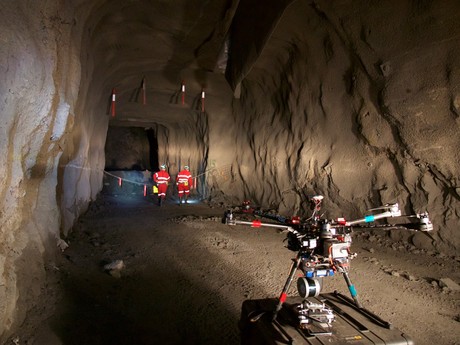Robot and drone technology could improve safety underground

Underground spaces such as tunnels and caves can often prove dangerous for humans, especially first responders.
CSIRO's Data61 is competing in the US Defense Advanced Research Projects Agency (DARPA) Subterranean (or 'SubT') Challenge, which aims to explore new approaches to rapidly map, navigate and search underground environments.
Teams from around the world will be competing in the SubT Challenge to propose novel methods for tackling time-critical scenarios through unknown courses, which are too hazardous for human first responders. CSIRO's Data61 is the only Australian entity competing and one of seven teams to receive up to US$4.5 million in funding from DARPA across the three-year challenge.
"We're honoured to be competing in DARPA's SubT Challenge, drawing on decades of experience in developing robots, sensing and communications systems for challenging environments like underground mines and caves," said Fred Pauling, Robotics and Autonomous Systems group leader at CSIRO's Data61.
"We're pairing our ultralight legged robots with our Hovermap GPS-denied drone autonomy technology, to create a robot team that can rapidly explore and map challenging underground environments, providing unprecedented situational awareness in time-critical scenarios such as disaster response."
CSIRO Data61's SubT Challenge team will create 3D maps of underground environments through LiDAR (Light Detection and Ranging) scanners mounted on legged robots as well as unmanned aerial vehicles which can fly in GPS-denied environments without a human controller.
Last year, the Hovermap technology enabled a fully autonomous beyond-line-of-sight drone flight in an underground mine, 600 metres below the surface in Western Australia.
Once developed, the robotics and network technology can help human first responders in understanding and exploring hazardous underground environments and also has applications across a range of industries including mining, transport, building and construction and agriculture.
The SubT Challenge team comprises nearly 30 people from CSIRO's Data61 Robotics and Autonomous Systems research group, students from QUT and the University of Queensland, as well as two funded partners including the Georgia Institute of Technology, led by renowned robo-ethicist Professor Ron Arkin.
Victoria's new psychological injury obligations now in effect
New obligations have come into effect for workplaces across Victoria to protect employees from...
Survey results show fall in national return to work rate
Safe Work Australia's 2025 National Return to Work (NRTW) Survey results have been released,...
National policy approach for workers comp and the gig economy published
Safe Work Australia has published a national policy approach for workers compensation and the gig...








